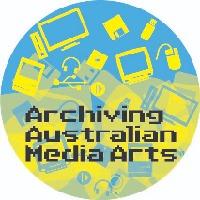Bit List Blog
Byte-sized Bit List: Using the Bit List to manage digital preservation actions
Elizabeth Hughes is Digital Preservation Lead for the Digital Archive Team at Queensland State Archives
Queensland State Archives has used the Bit List internally, in a very practical way, to help us organise our digital preservation work, prioritising legacy physical media and file formats for extraction and ingest.
Byte-sized Bit List: Using the Bit List to prioritize digital preservation
Leo Konstantelos is Digital Archivist at the University of Glasgow
At the University of Glasgow, we have used the Bit List in a couple of ways:
In 2022, we put together a Business Case for funding to set up an Archival Forensics Lab. In this, we referenced the Bit List to demonstrate how many endangered digital species there are in our Archives and Special Collections.
More recently too, we used the Bit List risk classification and the information contained within the ‘Integrated Storage’ and ‘Portable Media’ species as part of a methodology and tool for prioritizing archival forensic processing of digital collections stored in physical storage media.
Byte-sized Bit List: Using the Bit List to start a conversation about digital preservation
Bryony Hooper is the Digital Preservation Manager at the University of Sheffield
At the University of Sheffield, we have established a Digital Preservation Advisory Group (DPAG) which is composed of staff across the University who provide support and oversight for the coordination of our Digital Preservation activities. We meet periodically and make recommendations for the University’s Digital Preservation Service, including policy and strategic planning, as well as the development of resources needed to fulfil our mission. That mission is that the Digital Preservation Service seeks to facilitate the long-term discovery of, and access to, key information assets of the University. The University aims to embed good practice in digital preservation throughout the organization to enable new opportunities, while safeguarding institutional and cultural memory.
Byte-sized Bit List: Using the Bit List to garner action in support of Community Archives
As we invite new nominations to the Bit List, we have invited DPC Members who have used this resource in support of their own advocacy work to share how they did it and what the results have been.
Audrey Wilson is Partnerships and Engagement Manager for Scottish Council on Archives and starts us off on this series of 'Byte-sized Bit List' blogposts...
For the iPres Conference in 2022 we used the Bit List for the basis of a poster which set out the key issues surrounding Community Archives and invited contributions from digital preservation professionals to explore ways of helping community groups with their digital requirements.
Endangered bits and how to save them
Time has felt a bit elastic over the last few years for all of the obvious reasons; a year has either felt like a decade or 10 minutes. But I can assure you that despite it feeling like the latter, it IS time to relaunch our community call for nominations to the Bit List again! …all in time for our next full revision of the list which will be published on World Digital Preservation Day, 2nd November 2023.
Over the course of these elastic years, we have welcomed many new members of our digital preservation community, many of whom might be wondering what on earth this Bit List business is all about. There may be some long-standing members of the community thinking the same. So, for you, this blog post is a whistle stop tour of how this all came to be…and what to do with it!
In Perpetual Motion: Web Archiving Ongoing Social Phenomena
Natalie Vielfaure is the Digital Curation Archivist for the Research Services and Digital Strategies unit at the University of Manitoba Libraries in Winnipeg, Manitoba, Canada.
At the start of the COVID-19 pandemic, the University of Manitoba Libraries and the University of Winnipeg Archives launched a coordinated effort to archive websites documenting the COVID-19 experience in Manitoba, Canada. This post provides reflections on this experience and the challenges of documenting ongoing social phenomena.
With the global proliferation of COVID-19, many of us working in the GLAM sector have felt the pressures of capturing this unprecedented experience for posterity. Cautionary tales of the ‘forgotten pandemic’ of 1918 stress the importance of documenting the COVID-19 experience through the acquisition of diaries, photographs, web archives, and other documentary heritage. Like many institutions, the University of Manitoba Libraries and the University of Winnipeg Archives undertook a coordinated effort to capture this historical event by crawling websites related to our regional pandemic experience.
The ongoing endeavour led us to reflect on some of the challenges of documenting ongoing social events in perpetuity. The COVID-19 pandemic has no definitive end date. While it is a unique experience, similar challenges present themselves in collections documenting other ongoing social phenomena, such as truth and reconciliation efforts in Canada, and systemic racism. In such cases, the greatest challenge is determining how to effectively and realistically capture a representation of these events without exhausting institutional resources. Like all digital preservation activities, web archiving is constrained by finite resources such as limited storage space and staff time. Consequently, defining the scope of such activities is an important step in ensuring that resources are effectively used. But how do you scope something that is not entirely ‘scope-able’?
A Framework Enabling the Preservation of Government Electronic Records
Leslie Johnston is the Director of Digital Preservation and Elizabeth England is a Digital Preservation Specialist at the U.S. National Archives and Records Administration.
NARA supports digital preservation in a comprehensive manner, including guidance for record creators and record transfers, tools for processing archivists, services for copying records from legacy media, preservation strategy and file format plans, and the cloud based ERA 2.0 processing and preservation repository. Most recently, a NARA cross-agency team developed an extensible Digital Preservation Framework, which was publicly released in 2020 for adaptation and use across the digital stewardship community. The Framework is available on GitHub at https://github.com/usnationalarchives/digital-preservation, including a machine readable version of the format plans.
The UK Government Social Media Archive – now bigger, more comprehensive and searchable
Claire Newing is a Web Archivist at The National Archives, UK.
I’m really excited to be writing about how The National Archives (UK) has improved our social media archive. Different types of social media content are listed as either ‘Endangered’ or ‘Critically Endangered’ on the DPC ‘Bit List’ of Digitally Endangered Species so it seems like an appropriate subject for World Digital Preservation Day 2020.
We originally launched our social media archive in 2014 following a project we worked on with our former technical supplier, Internet Memory Research (IMR), to develop a method of capturing YouTube and Twitter content. My colleague, Tom Storrar, wrote about the project in detail in this post on The National Archives Blog: https://blog.nationalarchives.gov.uk/archiving-social-media/.
Digital preservation for research datasets
Antonio Guillermo Martinez is the CEO and founder of LIBNOVA and is based in Madrid, Spain.
The following blog is also available in Spanish below:
Last year, in our guest blog post for the DPC we wrote about “Augmenting the community, lowering the risk internationally” and we commented that many times individual problems related to digital preservation have a solution by looking at the experience of the community. This year the theme for the World Digital Preservation Day is ‘Digits: For Good´, and we want to focus on digital preservation of research datasets.
Let's look back, LIBNOVA promise from the beginning is to provide the most advanced digital preservation platform to the community. And we are achieving it step by step.
A few years ago, we created LIBNOVA RESEARCH LABS, to coordinate the lines of research to be followed in technological innovation within the company. At the same time, we have been doing market research to understand the needs and the differences between sectors (e.g., cultural heritage vs research). And finally, last year, the confluence of these two paths has led us to the development and launch of a ground-breaking research data management and preservation tool.
But what have we learned along the way?
Archiving Australian Media Arts: A cross-continental adventure
Cynde Moya is a Postdoctoral Fellow at Centre for Transformative Media Technologies at Swinburne University of Technology
I’m working on two ARC-funded projects out of the Centre for Transformative Media Technologies at Swinburne University of Technology in Melbourne, Australia. These are Archiving Australian Media Arts: Towards a Method and National Collection (AAMA); and Play It Again: Preserving Australian Videogame History of the 1990s (PIA2).
Both projects are a progression of CI Melanie Swalwell’s career-spanning endeavor to call attention to and preserve these at-risk digital heritage materials. Swalwell has a talent in bringing diverse institutions, roles, and people together to work on common goals.
These projects are end-to-end: choosing materials to preserve, digitizing the obsolete carriers, testing the digitized objects in emulators/Emulation-as-a-Service, checking fidelity of the emulated works with renderings on real computers, storing the digitized works with appropriate descriptive and technical metadata, and providing these emulated works to archivists and curators to store and use in exhibitions.





















































































































































